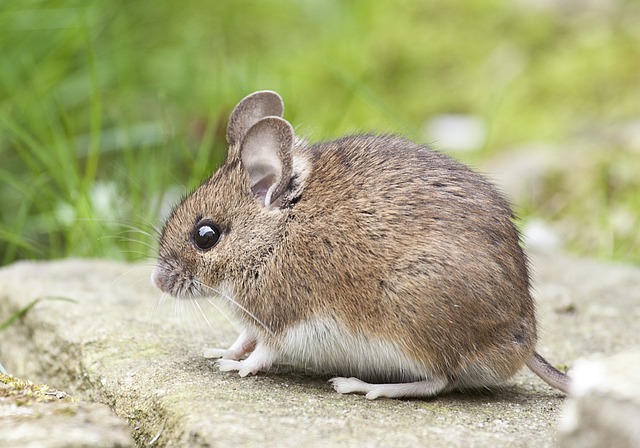Understanding mouse behavior is crucial for effective mouse prevention services. Mice enter buildings through small openings, follow scent trails, and prefer quiet, dark nesting spots near food. Common hiding places include walls, attics, crawl spaces, and under furniture. Professionals conduct regular visual inspections to identify entry points and nesting areas, using tools like electronic sensors and motion-activated cameras for a comprehensive assessment. Strategies involve sealing entry points, setting traps or baits, and maintaining property to deter mice. Regular inspections are vital for long-term protection against mouse infestations.
“Ensure your home or property is mouse-free with thorough inspections, a vital step in effective mouse prevention services. This comprehensive guide explores the intricate world of mouse behavior, revealing their subtle entry points and cozy nesting habits. From visual inspections to advanced techniques, we equip you with the knowledge to identify and address mouse activity. Learn proven strategies to seal entry points and deter mice, offering long-lasting protection for a peaceful environment.”
Understanding Mouse Behavior: Their Entry Points and Nesting Habits
Understanding the behavior of mice is crucial when it comes to effective mouse prevention services. Mice are adaptable creatures, constantly seeking out new sources of food and shelter. They typically enter buildings through small gaps, cracks, or holes, often guided by scent trails left by their kin. Once inside, they quickly scout for suitable nesting areas, preferring quiet, dark spaces near food sources. Common hiding spots include walls, attics, crawl spaces, and under large pieces of furniture.
These creatures are known to build intricate nests using a variety of materials, such as paper, cloth, and even insulation, creating cozy, insulated habitats to protect their young. Regular inspections should focus on identifying these entry points and nesting areas to disrupt the mice’s activity effectively. By understanding their behavior, professionals can employ targeted strategies, including sealing off entry points and setting up traps or baits in strategic locations, to deter and eliminate mouse infestations successfully.
The Role of Visual Inspection in Mouse Prevention Services
Visual inspections play a pivotal role in effective mouse prevention services. Skilled technicians meticulously examine spaces, focusing on areas where mice are likely to enter and establish nests. By observing signs like gnaw marks, droppings, footprints, or even visible holes, professionals can pinpoint potential vulnerabilities and take proactive measures. These visual assessments help identify hidden entry points, which are often difficult to detect without specialized knowledge.
During inspections, experts also look for evidence of past or current mouse activity, such as chewed wires or materials, which can indicate the extent of an infestation. This information is crucial in devising tailored strategies to deter mice and ensure a rodent-free environment. Visual inspection is not just a preliminary step but a fundamental tool that guides the entire mouse prevention process.
Advanced Techniques for Locating Mouse Activity and Nests
In the quest to uncover mouse presence, professional inspectors employ advanced techniques that go beyond basic visual inspections. One such method involves using electronic sensors and motion-activated cameras, strategically placed to detect any signs of movement or subtle disturbances caused by mice. These tools are invaluable in identifying hard-to-reach entry points and hidden nesting areas, especially in structures with complex architectures. By analyzing the captured data, experts can pinpoint areas where mice have been active, helping them to understand the extent of the infestation and tailor effective mouse prevention services accordingly.
Additionally, trained inspectors utilize scent trails as a crucial clue. Mice leave behind distinct odors, and skilled professionals can detect these faint traces to locate active nesting sites. This technique is particularly useful in identifying areas where mice have been present for some time, allowing for more targeted and efficient control measures. By combining advanced technology with keen sensory observation, mouse prevention services can offer comprehensive solutions, ensuring structures remain free from these unwanted intruders.
Effective Strategies to Seal Entry Points and Deter Mice Post-Inspection
After a thorough inspection, sealing entry points and deterring mice is crucial for long-term protection. The first step involves identifying and blocking all potential routes that mice could use to enter your property. Common areas include gaps around pipes, cables, doors, and windows. Seal these openings with materials like steel wool, caulk, or foam, ensuring a secure fit. It’s also essential to remove any potential food sources and nesting materials nearby, as this can significantly deter mice from lingering.
For added protection, consider professional mouse prevention services that employ advanced techniques and traps. These services often leave no trace, ensuring your property remains uninviting to pests without compromising aesthetics. Regular inspections and maintenance are also key; schedule periodic checks to identify and address any new entry points or signs of infestation promptly.
Comprehending mouse behavior and employing advanced techniques like visual inspections and innovative tracking methods are key components of successful mouse prevention services. By identifying entry points, locating nests, and implementing effective sealing strategies, professionals can offer comprehensive solutions to deter mice. These measures not only protect homes and businesses but also ensure a safer, more hygienic environment for folks living or working in affected areas.
